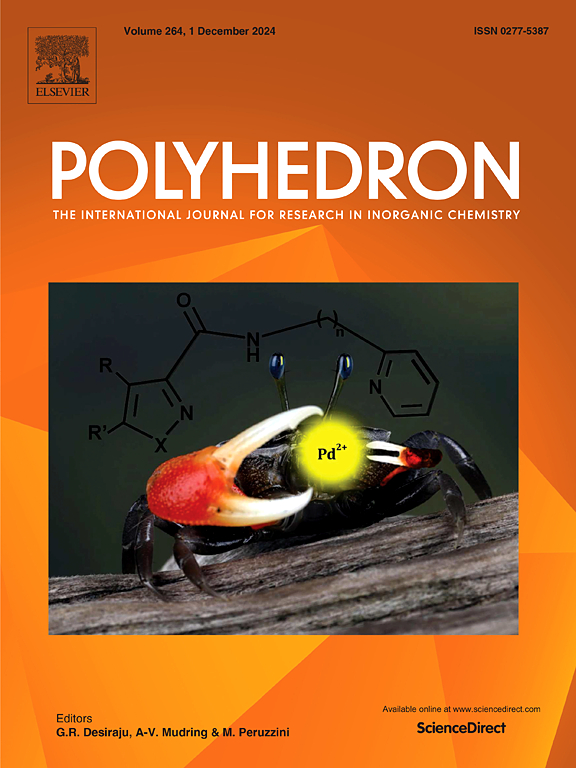High-temperature calcined Mn-MOF derivative for electrochemical detection of flumioxazin in environmental and food samples
IF 2.4
3区 化学
Q2 CHEMISTRY, INORGANIC & NUCLEAR
引用次数: 0
Abstract
Flumioxazin, a nitrophenyl herbicide widely used in agriculture, poses potential health risks due to its residue in agricultural products. This study elucidates the fabrication of a novel electrochemical sensor, MnO@C, specifically designed for the efficient detection of flumioxazin. The sensor MnO@C was created by annealing Mn-BTC, synthesized via a straightforward solvothermal method. The electrochemical behavior of MnO@C for detecting flumioxazin was assessed through DPV. The findings revealed that MnO@C demonstrated a wide detection range, achieving an exceptionally low LOD at 597 fmol/L for flumioxazin. Moreover, MnO@C exhibited exceptional duplicability, reliability, and anti-interference ability. The sensor MnO@C was also effectively utilized for the quantitative detection of flumioxazin in diverse samples. The results highlight the substantially practical utility of MnO@C in food and environment detection, which provides broad-spectrum environmental resistance and fast, efficient detection for flumioxazin residue. Additionally, a thorough analysis of the mechanism of MnO@C for monitoring flumioxazin was undertaken.

高温煅烧Mn-MOF衍生物电化学检测环境和食品样品中的氟恶嗪
氟恶嗪是一种广泛应用于农业的硝基苯类除草剂,其在农产品中的残留存在潜在的健康风险。本研究阐明了一种新型电化学传感器的制造,MnO@C,专门设计用于氟恶嗪的有效检测。该传感器MnO@C是由Mn-BTC退火制成的,通过简单的溶剂热法合成。用DPV法评价了MnO@C检测氟恶嗪的电化学行为。研究结果表明MnO@C具有较宽的检测范围,氟恶嗪的LOD极低,为597 fmol/L。此外,MnO@C表现出卓越的可复制性、可靠性和抗干扰能力。该传感器MnO@C也可有效地用于不同样品中氟恶嗪的定量检测。结果表明MnO@C在食品和环境检测中具有广泛的实用价值,可提供广谱环境抗性和快速高效的氟恶嗪残留检测。此外,还对MnO@C监测氟恶嗪的机制进行了深入分析。
本文章由计算机程序翻译,如有差异,请以英文原文为准。
求助全文
约1分钟内获得全文
求助全文
来源期刊

Polyhedron
化学-晶体学
CiteScore
4.90
自引率
7.70%
发文量
515
审稿时长
2 months
期刊介绍:
Polyhedron publishes original, fundamental, experimental and theoretical work of the highest quality in all the major areas of inorganic chemistry. This includes synthetic chemistry, coordination chemistry, organometallic chemistry, bioinorganic chemistry, and solid-state and materials chemistry.
Papers should be significant pieces of work, and all new compounds must be appropriately characterized. The inclusion of single-crystal X-ray structural data is strongly encouraged, but papers reporting only the X-ray structure determination of a single compound will usually not be considered. Papers on solid-state or materials chemistry will be expected to have a significant molecular chemistry component (such as the synthesis and characterization of the molecular precursors and/or a systematic study of the use of different precursors or reaction conditions) or demonstrate a cutting-edge application (for example inorganic materials for energy applications). Papers dealing only with stability constants are not considered.
 求助内容:
求助内容: 应助结果提醒方式:
应助结果提醒方式:


